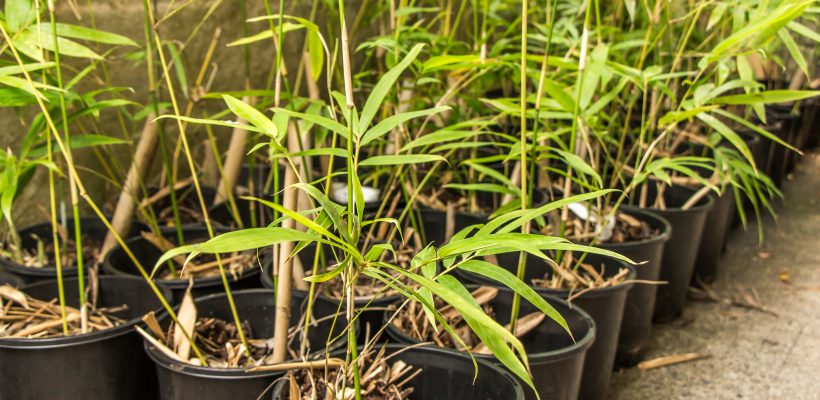
Seedlings to full sized plants, bamboo’s life cycle
Where do bamboo seedlings come from and what is their life cycle? Bamboo plants are perennial grasses which produce woody hollow stems, but how do they grow?
Shoots
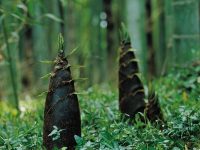
New shoots and in fact roots grow from a network of underground rhizomes. Although sprouts or shoots can emerge any time of the year depending on the climate, they usually come out in spring. Shoots come out of the ground full sized meaning they are already as large in diameter as they will get. The shoot then continues to grow vertically for a couple of months until it has reached its full height.
Bamboo holds the record for being the fastest growing plant. Some species have been proven to grow at a rate of 91cm per day. Unfortunately this is not the case for all species of bamboo.
Once the shoots emerge from the ground, they grow into culms.
Culms
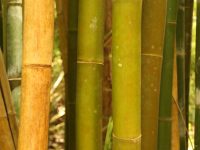
The culms of bamboo are woody and usually hollow. They range in height from about 30cm to reaching a staggering height of over 30m depending on the species.
The parts of a culm include nodes which seperate the culms into compartments. Branches grow from these nodes. Internodes are the hollow sections between the nodes.
Lastly there are sheaths which are modified branches, however they look more like modified leaf blades. They hold a very important role in protecting the culms’ most vulnerable part by providing stiffness to the lower part of each internode. Once the internodes are mature enough, the shealths slowly dye off and make great mulch at the base of the bamboo.
Each culm will live between 5 and 10 years before turning brown and dying off, leaving room for a new culm to take its place.
Spreading
This is where we have to understand the two different types of bamboo.
Clumping bamboo (sympodial)
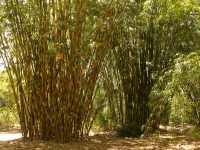
This is the bamboo that the majority of the population are after for their green privacy screen. It is the bamboo that stays where you plant it due to shoots growing from buds on the end of rhizomes. The rhizomes don’t grow very far horizontally before producing a bud and a new shoot. This causes a clump to form which will slowly expand in diameter as the clump matures.
Running bamboo (monopodial)
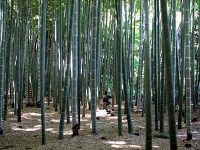
It seems most people fear this type of bamboo, thoughts of bamboo going wild and popping up everywhere come to mind. However in the right controlled environment, running bamboo is beautiful, useful and unique.
Shoots develop by an underground stem. This stem consistes of roots and rhizomes and spreads horizontally. Unlike clumping bamboo, running bamboo shoots can come up in unexpected places, like the other side of a road.
Flowering bamboo
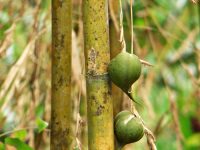
The last stage of a bamboos life cycle is the flowering stage. Each species has a different flowering cycle which can range from 3 to 120 years. For the gracilis slender weavers, no one knows when their last flowering cycle occurred, however it is doubtful it will be anytime soon.
Once the bamboo flowers, it produces a large number of seeds which are carried in the wind, ready to start the life cycle of that species again. Many species of bamboo plants after setting seed will then die.
A phenomenon within some species of bamboos is when all the plants of the exact same species will across the globe flower. They flower within a couple years of each other, set their seeds, then all die. This is independent of their location, climate and any other parameters.
This mass flowering (gregarious flowering) is quite rare however it can endanger certain species of bamboo if the seeds are hard to germinate.
What about the life cycle of bamboo seedlings?
Bamboo seedlings are what a lot of people refer to small bamboo plants which have been recently propagated.
They can range in height from about 50cm to 1.5m depending on the variety. “Seedlings’ usually grow from older plants, not from seed. This is why the life cycle of bamboo seedlings is slightly different to what people expect.
